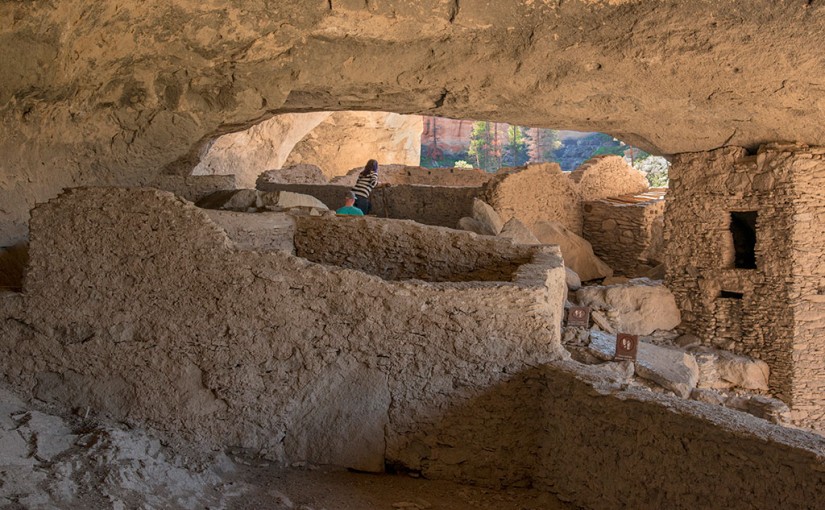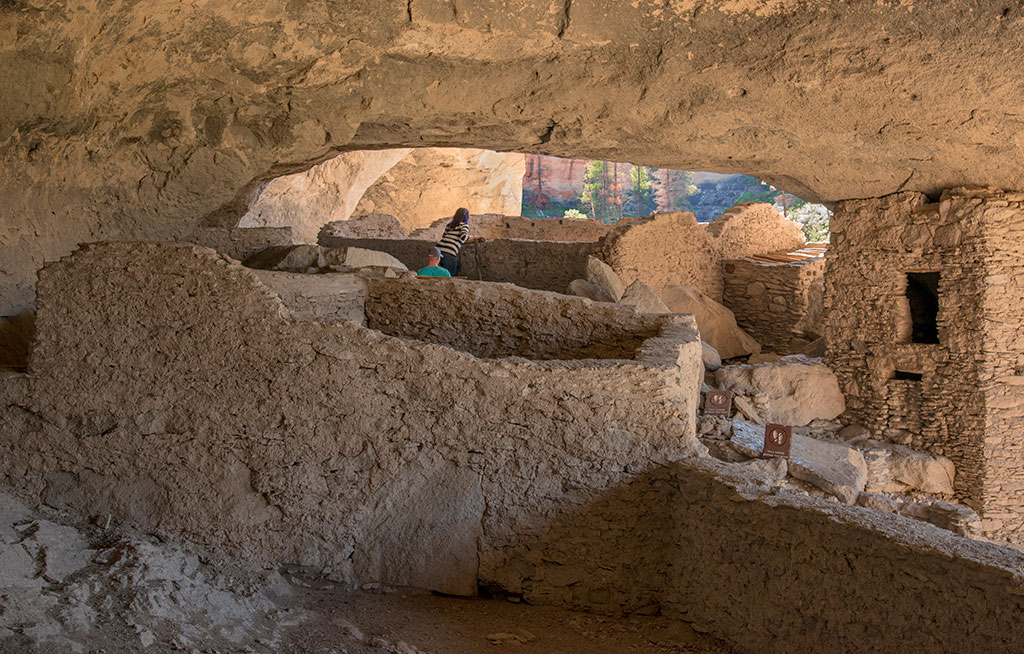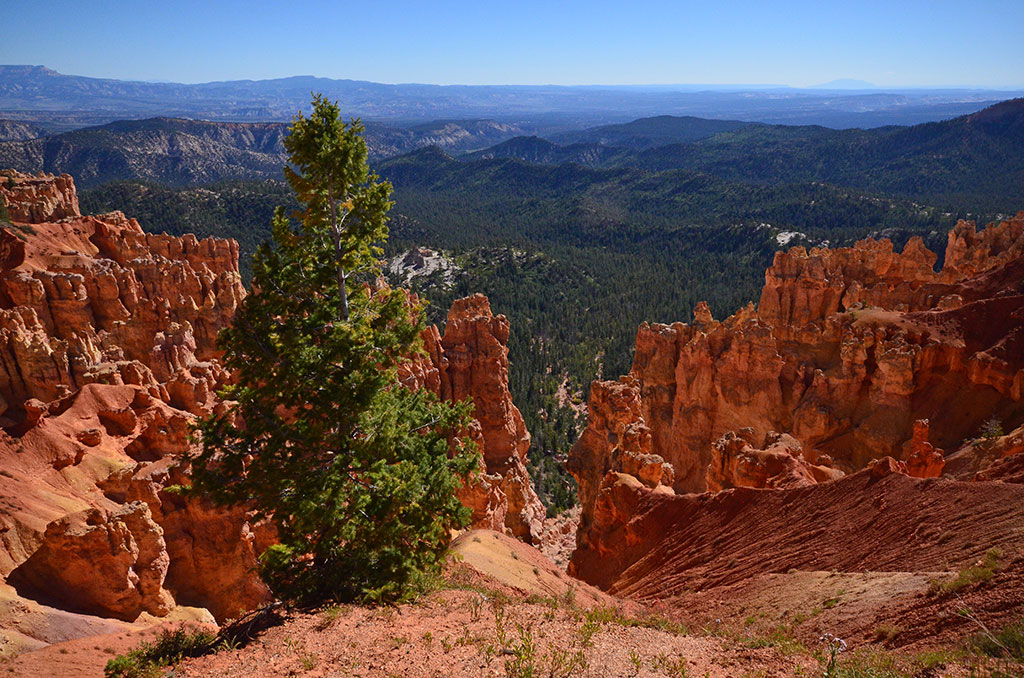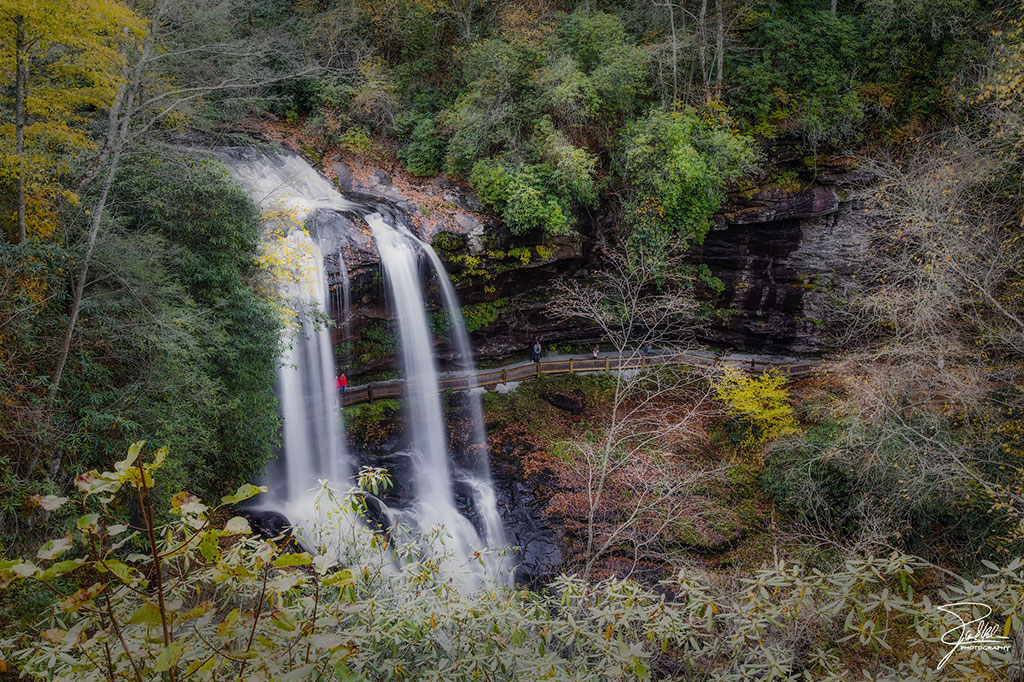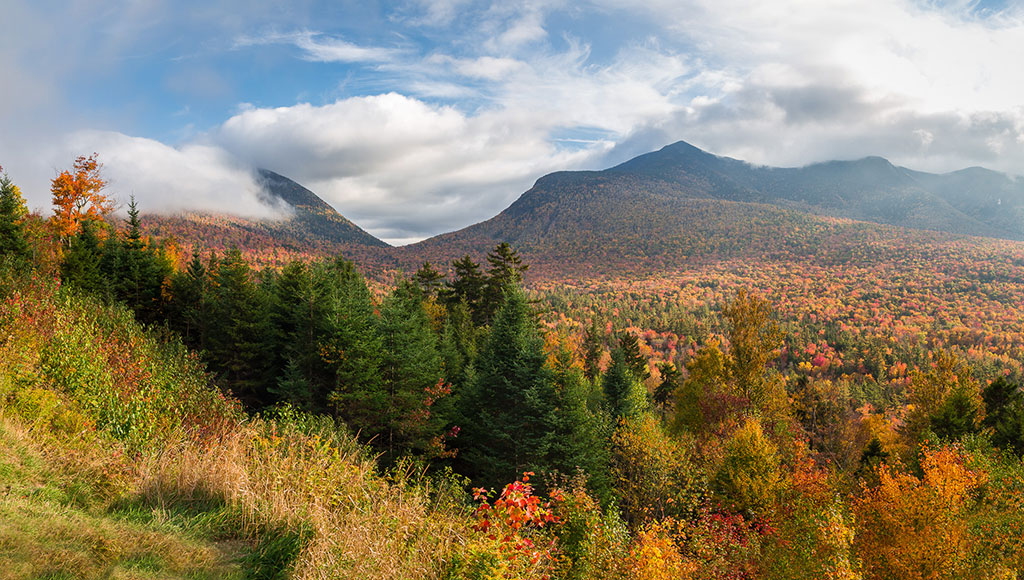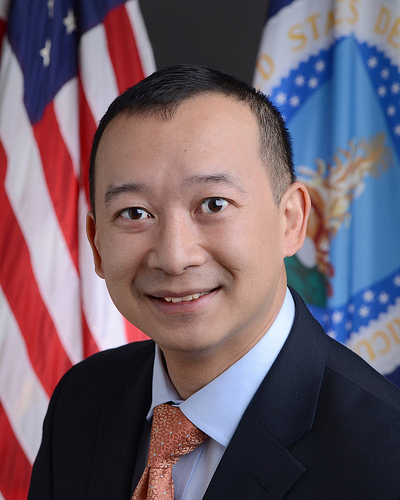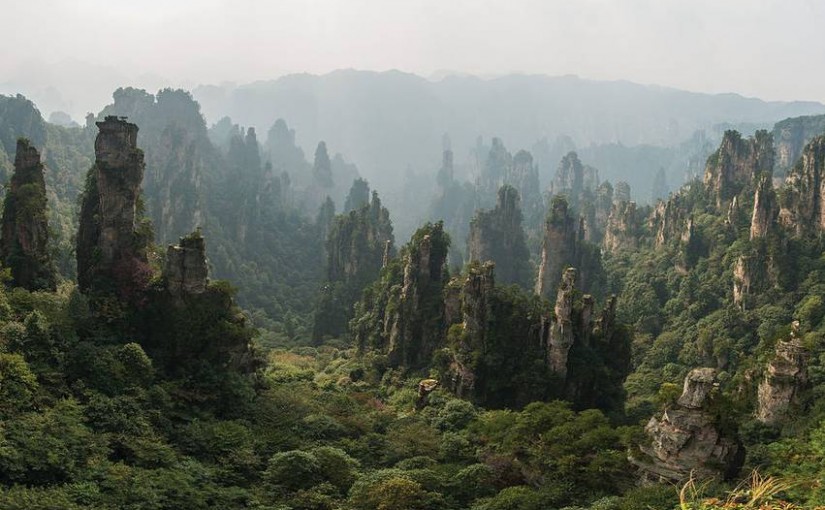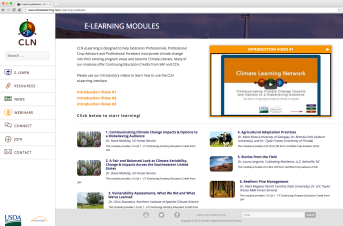 The Climate Learning Network is developing a new climate literacy certification program for Extension personnel and others that provide assistance to farmers, landowners and foresters. The certification will help professionals incorporate climate science into their daily programming and decision making. Climate issues will soon have an impact on production across the globe. Integrating climate concepts into daily decision making will help you and your clients prepare for an uncertain future. If you already incorporate climate issues into your Extension programming we need you to help us develop and test this new program! Please contact cln@sref.info to become a member of our Climate Advisors Network.
The Climate Learning Network is developing a new climate literacy certification program for Extension personnel and others that provide assistance to farmers, landowners and foresters. The certification will help professionals incorporate climate science into their daily programming and decision making. Climate issues will soon have an impact on production across the globe. Integrating climate concepts into daily decision making will help you and your clients prepare for an uncertain future. If you already incorporate climate issues into your Extension programming we need you to help us develop and test this new program! Please contact cln@sref.info to become a member of our Climate Advisors Network.
Author: Site Owner
Alaska Beavers Entertain Web Cam Viewers Around the World
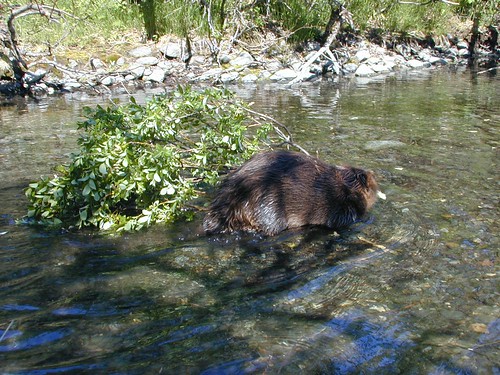
A busy beaver gathers a tree sprig to help build his lodge on Steep Creek on Alaska’s Tongass National Forest. Photo courtesy of Don Martin, Tongass National Forest
Two beavers sleep peacefully in their den on Steep Creek in Juneau, Alaska, never realizing they are being watched via a hidden infrared camera. Hundreds of viewers tune-in to a live video feed on the U.S. Forest Service YouTube Channel throughout the day to see the beavers come and go, breathing rhythmically as they nap and then stretch, chew and scratch an occasional itch.
Although the beaver cam is now an established fixture at the Mendenhall Glacier Visitor Center, it started out of simple curiosity according to Pete Schneider, a natural resource specialist for the Tongass National Forest. He and fisheries biologist Don Martin first experimented with a beaver cam in 2004 after they saw a cache of food in front of a beaver lodge on Steep Creek. It was a sure indication that beavers, who have a tendency to move around, were actually using the lodge at the time. They decided to run electricity through a conduit to that location in order to power an infrared camera.
Schneider and Martin rigged their first camera on a piece of rebar, and poked it through a hole in the lodge. “It worked like an upside down periscope,” Schneider said. “We could twist it left and right and move it up and down. Don, who was watching a handheld monitor, said, ‘Hey, there’s a beaver right there!’ That was our start.”
They fixed the camera in place, insulated it, and attached it to a closed-circuit monitor which could be seen in the visitor center, even in the winter. It was a great show, but limited to those who were at the glacier in person. It would be years before it became possible to live stream the video on the internet.
The two beavers in the lodge this summer have already received thousands of web views. In the past, Schneider has seen as many as eight at a time in residence.
Opinions differ about the value of beavers in the ecosystem at Steep Creek. Beaver tend to have the most positive impact in areas that lack ponds and slow water rearing areas. Steep Creek is not in short supply of either due to its location by Mendenhall Lake and nearby kettle ponds, which are holes created by melting ice chunks. Beaver can plug culverts that extend under roads or temporarily inhibit the movement of substrate—spawning salmon need that constant movement of gravel for their nests. If the beaver population grows too robust, they could impact access to the spawning grounds for adult fish.
Nevertheless, Forest Service staff have managed a workable balance in allowing the beavers to share the rich resources of this area.
Beavers are primarily nocturnal and usually occupy the lodge during the day. To date, the cam has received more than 70,000 minutes of watch time from viewers across the United States as well as foreign countries with an average watch time of about 15 minutes. Best viewing times are between 7 a.m. and 7 p.m. Alaska Standard Time.
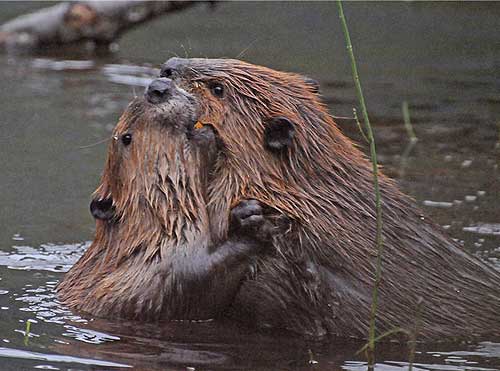
Beavers are part of the web of life in Steep Creek near the Mendenhall Glacier on Alaska’s Tongass National Forest. Photo: Tongass National Forest
Using Market Data to Feed the World

Science and data may hold the key to how the world will feed 9 billion people by 2050, and USDA Research and Science Action Plan will help guide the way.
In 2050, there will be about 9 billion people in the world. How do you feed 9 billion people? Clearly, we need more food, greater production, and more efficient processes, but how do we achieve that and how does that translate to success?
The answer may be found through science and data. USDA works hard to provide good data to decision makers on the farm, in the field, at the lab and in the office place. This data includes economic information that characterizes and evaluates global market performance and keeps food and agricultural systems working smoothly. Information includes data on crop production, farm income, food and agricultural prices, trade, nutrition, and food security.
The USDA’s Research, Education, and Economics (REE) Area Action Plan helps drive this effort with seven goals that all support Agricultural science and research. Goal 1 in particular aligns REE Mission area activity around sustainable intensification of agricultural production. A subcomponent of Goal 1 involves consumer and industry outreach, policy, markets and trade, guiding USDA investments in data development, analysis, and dissemination to improve the understanding of agriculture markets, domestic and foreign trade policies, and other factors that impact food systems.
REE agencies work together to collect, report, and interpret data from nearly every stage of the food production system, and their efforts help farmers decide what to produce and how to market their products. Businesses use the data to manage inventories and make investment decisions. Policymakers need data to understand the needs and the effectiveness of programs that can support farmers, protect the environment, and improve consumer access to nutritious food. Often, insights into new and emerging developments across the agriculture sector, such as the growth in markets for local foods, the demand for organic foods, and the environmental outcomes of changing agricultural practices, are gained. Other times, data point to critical shortcomings in the way we operate, stimulating policies and action, as well as calls for more data.
Interesting products and research efforts include:
- Understanding the demand for some of the most widely produced and traded agricultural commodities, supporting estimates of market conditions and reliable price forecasts.
- Using data from a series of surveys called the Current Agricultural Industrial Report (CAIR) Series to improve the commodity market outlook forecasts and help farmers make better production decisions, and firms reduce their costs and risks.
- Reducing food loss by using data from the Loss-Adjusted Food Availability (LAFA) Data Series. ERS estimates that 31 percent—or 133 billion pounds— of the available domestic food supply (an estimated $161.6 billion) in 2010 went uneaten. USDA is active in the public discussion of food waste, promoting sound policy initiatives.
- Interviewing farm operators about their cropping practices, farm businesses, and households and producing the Agricultural Resource Management Survey (ARMS) to construct government estimates on farm income, costs of production, and agricultural productivity. ARMS is used internally to USDA and also externally by economists to study farm management, structure, and farm household well-being.
- Facilitating data consumption, awareness and transparency, REE’s Charts of Note inform users with the wide variety of topics studied at ERS and the ability to quickly drill down to more detailed data and analysis if needed.
These policies, programs and activities are used to inform those who have the ability to influence the future, encourage new practices to produce a greater abundance of food.
The U.S. Food Safety System Has Come A Long Way in 50 Years
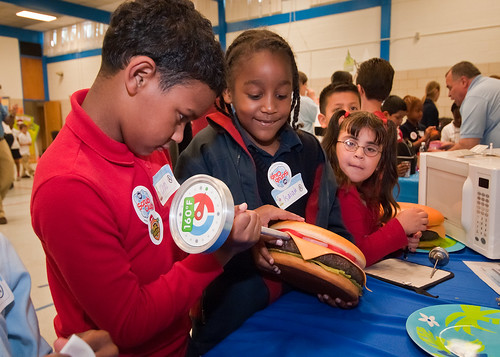
In nearly eight years, the federal government has spurred a remarkable rise in consumer knowledge.
By the time this blog posts today, most readers will have already enjoyed at least one meal. Over their breakfast—fresh fruit, a bacon and egg sandwich, or maybe a grab-n-go energy bar—Americans were probably thinking about all the tasks that meal would fuel them to do for the day, and not whether their food could make them ill. But a strong and diligent network of public servants at the federal, state and local levels were thinking about how to protect you from foodborne illness over their breakfasts this morning, and they’re still thinking about it now. Their job day in and day out is to make sure the food on America’s tables—including yours and theirs—is safe to eat. They are the best in the world at what they do, and they’re constantly getting better.
I have proudly been a part of this team since 1978, when I accepted a job with USDA’s Food Safety and Inspection Service (FSIS) as an inspector in a Dalhart, Texas beef facility. FSIS is the federal agency charged with ensuring the safety of America’s meat, poultry and processed egg supply, and we work hand in hand with the Centers for Disease Control and Prevention (CDC) and the Food and Drug Administration (FDA), as well as state and local departments of health and agriculture. Over the years, I worked my way up from that entry level position in Dalhart, to managing FSIS’ Dallas District, to eventually managing the entire agency as Administrator. In my nearly 40-year career, I have seen major changes in the U.S. food safety system.
When I first began as a food inspector, because of the tools available to us and our understanding of what caused foodborne illness at the time, FSIS relied almost exclusively on visual inspection of animals, products, and plant operations. With experience and better technology, our focus as an agency has shifted. Today, we’re able to prevent invisible hazards, such as bacterial and chemical contamination.
Under the Obama Administration, the U.S. food safety system has seen some of the most significant updates since the 1950s, adopting a risk-based, data-driven approach to prevent foodborne problems, rather than reacting after something goes wrong. At FSIS, we have accomplished this in the form of tighter and more strategic food safety requirements for food companies, enhanced consumer engagement, and smart innovations to our internal processes. In the past seven years, we’ve adopted a zero-tolerance policy for six dangerous strains of E. coli. We’ve instituted several improvements to poultry inspections that together are expected to reduce Salmonella and Campylobacter illnesses by 67,000 per year. We’ve prevented tons of mislabeled food from entering commerce, and worked with companies to tighten their labeling protocols. And above all, we’ve moved the needle on foodborne illness, watching cases attributed to USDA-regulated product drop by 12 percent.
All of this is possible because every day, 7,500 food safety inspection personnel go to work in more than 6,000 regulated food facilities and 122 ports of entry, where last year they inspected 145 million hogs and cattle, and 9 billion chickens and turkeys, verifying that FSIS regulatory requirements are met. Another 2,000 food safety professionals go to work in three public health laboratories, 10 district offices, and our headquarters office. These employees run test results, dispatch outbreak investigators, and unpack data to reveal telling trends and inform proactive, prevention-based policies that will lead to safer food and fewer illnesses.
Today, USDA is highlighting their work, and that of partners outside of FSIS, in the newest chapter of our 2016 Results project at http://bit.ly/results-ch7. Because their jobs are done largely behind the scenes – at laboratories, alongside private employees in food processing facilities, and sometimes undercover—you may be surprised at the scrutiny given your favorite food products. I encourage you to visit our new chapter to see what we’re doing, and know that we will only continue to improve.
5 National Forest Road Trips to Add to Your Bucket List
By Lindsay Seventko, Communications Intern
Pack the car and make a new playlist for these five breathtaking drives through National Forests. With drastically diverse scenery from cacti and petroglyphs to Robert Frost’s mountainous muse, you’ll want to see more of these National Forests than you could by foot or by paddle. Get ready to explore these unique areas by car — but be sure to allow time to stop, relax and take in the beautiful scenery.
1. Trail of the Mountain Spirits Scenic Byway — Gila National Forest, New Mexico
You won’t be bored driving through this National Forest in New Mexico, with dramatically varied terrain and ecosystems, and combining millennia of history with stark reminders of modern activity. The drive begins in an old mining town that boomed in the late 19th century with the discovery of silver, and later of gold. As the scenic drive begins, it climbs through the lush aspens and Douglas-firs before dropping to semi-arid lowlands full of junipers and cacti. Ponderosa pines and cottonwood dot the side of the road up to a breathtaking vista overlooking the Gila River canyon and wilderness. After taking in the sights, traverse back down along the road to explore Pueblo Indian cliff dwellings dating back to the 13th century. A brief break from driving to walk on a trail will reveal ancient petroglyphs, stunning scenery and possibly one of the 10 species of hummingbird that make the National Forest their home. Be sure to also explore the nearby overlook of one of the largest open pit copper mines in the world, as well as the City of Rocks State Park that boasts volcanic rocks dating back 34 million years.
2. Highway 143 — Dixie National Forest, Utah
Known as the patchwork trail to historians, Highway 143 originated with early pioneers struggling to get food and supplies during a hard winter. The deep snow could only be walked on by laying a quilt down and walking on top of it. Today, this route traverses through six major life zones in an array of differing views. Known for its rainbow of colors experienced on the 51 mile route, the road climbs to 10,400 feet at the top of the “Grand Staircase” formation and dips back down through thick aspen forests and unique geological formations, with distant views of pink cliffs and ancient lava fields.
3. Mountain Waters Scenic Byway — Nantahala National Forest, North Carolina
In this national forest, dense canopies only allow sunlight to reach the ground at noonday, inspiring the forest’s Cherokee name, Nantahala, meaning “land of the noon day sun.” Winding up the Cullasaja River Gorge, the Mountain Waters scenic byway is laced with cascading waterfalls and tranquil pools that line the route, offering pristine places to stop and wander down forested trails, picnic beside rushing rivers and cast a line in the water for rainbow and brook trout.
4. White Mountain National Trail — White Mountain National Forest, New Hampshire
The White Mountains in New Hampshire are home to some of the most inspiring forests in the United States — they were Robert Frost’s muse, Nathaniel Hawthorne’s retreat and Thomas Cole’s favorite subject. Explore this National Forest via a 100-mile loop of scenic byway, traversing across 800,000 acres of rugged mountain scenery, over three historic notches, under seven covered bridges and along many roadside waterfalls.
5. Crooked Creek Pass — White River National Forest, Colorado
If you want a solitary, windows down retreat, Crooked Creek Pass Road (and its side roads!) is the place to explore. Off the beaten path of paved, populated national byways, this road ventures across the heart of White River National Forest, revealing breathtaking vistas alongside rivers and climbing ridgelines shaded by towering pines. Unlike most scenic drives, the Crooked Creek Pass, and connecting roads, are mostly unpaved red dirt roads, offering an opportunity to get out and explore less traveled wilderness areas. Traversing the area presents a greater probability of seeing wildlife — bighorn sheep, mountain goats, elk and possibly the elusive lynx.
A Conversation with USDA Leader Lanon Baccam

Lanon Baccam, Deputy Under Secretary for Farm and Foreign Agricultural Services and USDA Military Veterans Agricultural Liaison, helps connect veterans with opportunities in the field of agriculture.
Lanon Baccam serves as the Deputy Under Secretary for Farm and Foreign Agricultural Services (FFAS). Baccam oversees the domestic programs within FFAS, including Farm Service Agency and Risk Management Agency. Baccam also serves as the USDA Military Veterans Agricultural Liaison. Being an Army veteran, he connects veterans with opportunities in the field of agriculture, providing information to returning veterans about services available to them through USDA.
This interview took place at Arlington National Cemetery, where scores of service men and women lay at rest after giving the ultimate sacrifice to protect our country.
“This is what we’re here looking at today. Every one of these headstones represents someone who gave their life for this country, and that to me, is one of the most compelling reasons why I work as hard as I do for our servicemen and veterans.” –Lanon Baccam
Why are military members and veterans a good fit for agriculture?
There is a certain value system that exists in rural America that are some of the same values that members of the military have. Respect for the land, hard work, and really just believing in something bigger than yourself. This drives them to serve. There’s no other group of people out there who are used to hard work, waking up early, staying up late and are mission focused. That’s why they’re a good fit for farming and ranching. It’s a business; there’s a lot of different aspects to it. There’s hands-on hard work, you’re outside. Military members spend a lot of time outdoors, and many of them don’t want to go back and sit at a desk all day, so getting into farming and ranching is a good transition for them, because it’s a more natural fit.
What are some ways you connect service men and women to agriculture?
In February, we signed a MOU with Hiring Our Heroes. Hiring Our Heroes is a program of the U.S. Chamber of Commerce Foundation, and Hiring Our Heroes works and coordinates directly with DOD and commanders around the country to host what I believe are the premier employment, or transition summits for veterans.
It’s really difficult to get a hold of these guys when they get out of the military. When I got out, I separated and was never contacted again. Having the ability to reach these guys through transition summits while they’re still serving is critically important for us to be able to continue to help them once they transition back to civilian life.
Are there programs available for soldiers returning home with disabilities?
We know there are a certain percentage of soldiers, service members and veterans who are experiencing disabilities; visible and invisible. Anecdotally, we know that farming and ranching is helping them, truly helping them.
There is therapeutic benefit to farming and ranching because these service members are getting out of the house, getting in to the ground, getting their hands dirty and finding a new purpose. They served this country admirably by protecting it, now they can continue their service by providing for it through agriculture.
As for a specific program, USDA funds an organization called AgrAbility. AgrAbility has been in service for decades, and they are an organization that helps people get or stay in farming and ranching if they have physical disabilities.
Do you have a veteran success story that benefitted from USDA programs?
In the broad sense, there’s been over 466 million dollars in farm loans to veterans since 2009. That’s almost 4,000 service men and women we’ve helped in seven years.
More specifically, there is a Marine veteran in California who served three tours in Iraq. He came back and started a produce farm operation which he sells at a local market. He became successful enough to hire more Marine veterans to come work for him and learn his system, so they can branch off and do it on their own. It’s become more of a training ground. He’s utilized multiple USDA programs such as Farm Service Agency (FSA), Natural Resource Conservation Service (NRCS) and I’m sure others as well.
What is the best part of your job, in your opinion?
Having spent time in the Army myself and having gone through this process already, it makes me feel good to know that I’m helping my brothers and sisters in arms. We are helping them find their next step, because it can be scary.
A lot of these folks, all they know professionally is the military. Branching out and stepping into the civilian workforce is really something they haven’t done before, and it’s difficult for them to even know where to start. In the military you’ve got your comradery with your squad mates and everyone else you work with; you’ve got somebody there who’s got your back. They’re afraid when they get out of the military they’re going to lose that. We’re showing them that’s not the case; at USDA, we’re going to be there every step of the way.
Any last minute thoughts?
At USDA, we use all our tools and resources and programs to try to make a difference in the lives of veterans. I try to make them understand that at USDA, we’re going to be there every step along the way to help them achieve their dreams of farming and ranching, and help them identify what’s available in the agricultural industry.
For more information on USDA programs available to veterans, please visit usda.gov/veterans.
Forest Digest — Week of June 27, 2016
Find out the latest in forest news in this week’s Forest Digest!

Zhangjiajie National Forest. Credit: chensiyuan/Wikimedia Commons.
- ‘Rule-breaker’ forests in Andes, Amazon revealed by remote spectral sensing — Science Daily
Findings from recent studies may provide insight into how tropical forests will respond to climate change due to new understanding of how forests in the Amazon and Andes are put together. - 10 beautiful surreal forests fit for a fairy tale — Treehugger.com
Explore this amazing listical/slideshow with images from some of the most stunning and fairy-tale-like forests in the world. - Seed-bombing startup DroneSeed wants to fight deforestation with a swarm of UAVs — DigitalTrends.com
This video and article profile the work of a startup looking to use a variety of technology, including drones, 3D mapping and mini-cannons, to address deforestation in a big way. - Watching a forest breathe — Science Daily
New studies analyzing how forests exchange carbon and other greenhouse gasses with the atmosphere during photosynthesis and respiration may help improve the accuracy of climate prediction models.
Unforced variations: July 2016
A week is a long time in politics climate science: Nonsense debunked in WaPo, begininngs of recovery in the ozone hole, revisiting the instrumental record constraints on climate sensitivity…
Lots of lessons there.
Usual rules apply.
The Best Climate Change Podcasts
(This is an update of a previous post that includes some new podcasts. So the end of the title was changed from “Podcast” to “Podcasts”. I will keep updating this page as new and better podcasts become available.) Are you hungry for a good podcast on climate change? I know I am. Unfortunately the pickings are slim. But I’m sure that will change in the coming years as climate change comes to dominate the nightly news. If you search iTunes or the web for “climate change podcast” a bunch of stuff comes up. Most of them aren’t very recent or Continue reading The Best Climate Change Podcasts
The post The Best Climate Change Podcasts appeared first on The Climate Advisor.
In Conversation with #WomeninAg: Mary Safie
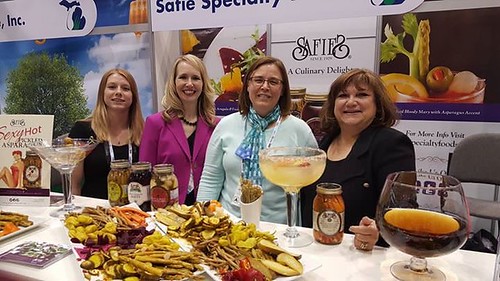
(Right to Left) Mary Safie, owner of Safie Specialty Foods pictured with Jamie Clover Adams, Director of Michigan Department of Agriculture and Rural Development (MDARD), Jamie Zmitko-Somers, MDARD’s International Marketing Program Manager of the Office of Agriculture Development and Allie Fox, MDARD’s International Marketing Assistant of the Agriculture Development Division at the 2016 National Restaurant Association in Chicago.
Every month, USDA shares the story of a woman in agriculture who is leading the industry and helping other women succeed along the way. This month, we hear from Mary Safie, owner of Safie Specialty Foods. In 1994, Mary took over her family’s canning business which began in 1929 in her grandfather’s kitchen with food grown on his farm in Chesterfield Township, Michigan. Specializing in pickled vegetables, Safie’s has experienced success domestically and abroad, with assistance from USDA’s Foreign Agricultural Service and State Regional Trade Groups.
Tell us how you reignited the family business in 1994 and how you assumed a leadership role?
It was the passion that I learned as a young girl, following my dad and relatives in the pickling process that reignited our family business. I wasn’t ready to let go of the process and with my Dad and Mom at my side, I decided to continue with the family tradition. We are now a successful, women-owned and operated business.
What does a typical day look like for you?
I’m an early riser and usually off to the plant to walk the floor and see factory staff for the morning. I make certain daily decisions that are passed on to the supervisory staff. Any mechanical interruptions or order explanations are taken care of and inventory reports are received. On a daily basis, I’m on the phones marketing and planning for future orders and product research. Currently, my focus has been on marketing and introducing our newest product, our Organic Sweet Pickled Beets, which have generated a tremendous amount of buzz and positive feedback.
Who are your role models?
My parents—George and Madeline Safie—laid the foundation and provided guidance and are the best role models I could have asked for. Our staff and advisors at Safie’s create a dynamic, collaborative team with regard to processing, marketing, and growing operations.
What do you wish you knew before starting into food?
How the globalization of our food supply is reliant upon a strong knowledge of food safety and quality assurance. There is a science behind a sustainable shelf life, lasting taste and presentation. Also, growing to understand the needs of regulatory agencies has been challenging, as they are very task-oriented until you understand the how and why. But the support and guidance that I have received and continuously receive will always be the backbone of the growth of knowledge of organization.
You’ve had success exporting your products. How did you find overseas markets? What benefit has this provided for your business?
We worked very closely with the USDA’s FAS program and other federal programs offered through the state of Michigan’s Department of Agriculture & Rural Development. Through MDARD, we were given a grant for equipment and expansion, which allowed us to grow and put us where we are today. These opportunities gave us the ability to attend trade shows internationally and domestically, where we secured the overseas markets we sell our products to. It all begins with a fantastic product that we market and produce, and support from USDA programs.
What is some advice you have for other women looking to run a successful business with both domestic and international markets?
First and foremost, you must possess a strong passion and a love of the work that you are doing, because it becomes a part of you. Drive and tenacity are two key ingredients to a recipe for success. Love what you do, do what you love, and you’ll always shine.




